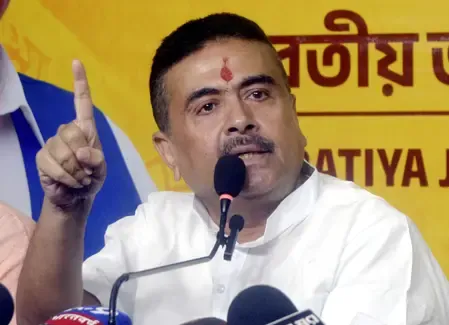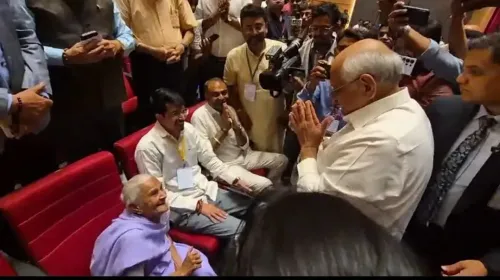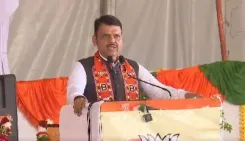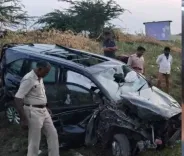What Happened During the Mumbai Attacks on 26/11?
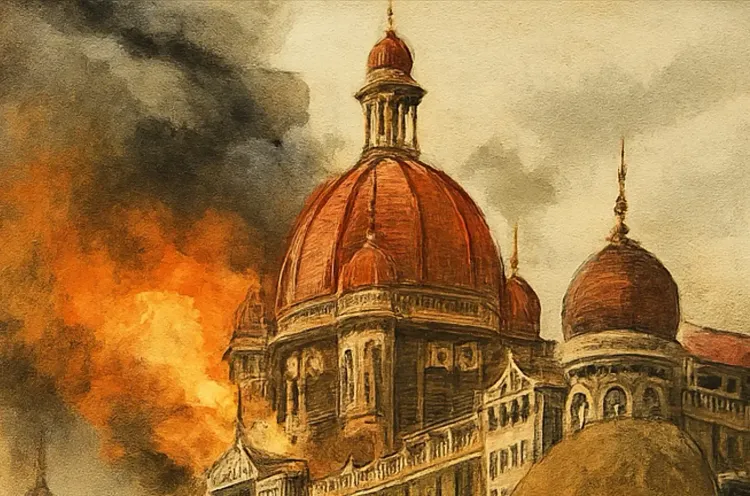
Synopsis
Key Takeaways
- Bravery of individuals can shine through even the darkest times.
- Resilience in the face of terror can unite a nation.
- Media's role is crucial in informing the public during crises.
- Security forces must remain vigilant and prepared.
- Every story of courage contributes to the collective memory of a nation.
New Delhi (NationPress) On the evening of November 26, 2008, the vibrant city of Mumbai was abruptly disrupted by the sounds of gunfire, explosions, and chaos. What initially seemed like a typical night transformed into a harrowing ordeal that challenged the bravery of its citizens, left an indelible mark on countless families, and remains forever etched in the collective memory of the nation.
Within the span of approximately 60 hours of rapid developments emerged tales of remarkable valor—of individuals who faced terrorists head-on, and of ordinary citizens who became heroes in their own rights.
One such hero is Praveen Kumar Teotia, a former member of the MARCOS (Marine Commandos), who received the Shaurya Chakra for his bravery during the attack on the Taj Mahal hotel. Praveen endured five gunshot wounds that day, one grazing his ear and another fracturing his ribs, which led to significant lung damage. Despite the perilous conditions and injuries, he engaged the terrorists until his comrades successfully evacuated 150 individuals from a nearby hall.
“I was part of two MARCOS teams that joined the one already at the site, with a total of 24-25 commandos entering through various access points,” he recounted.
The MARCOS, a premier special forces unit of the Indian Navy established in February 1987, is renowned for its proficiency in unconventional warfare, counter-terrorism, and high-risk missions. Their reputation for professionalism and adaptability spans across land, air, and sea.
Among the significant operations involving these elite commandos were Operation Cactus in the Maldives in 1988, the Kargil War in 1999, and numerous anti-piracy initiatives. On that fateful day in Mumbai, what went through Praveen's mind?
“There was no particular thought except how to neutralize the terrorists and save innocent lives,” said the now 40-year-old, who has since transitioned into a legal career in Delhi after leaving military service.
“For a soldier, serving his country and its citizens is a profound privilege, enabling one to eliminate threats against them,” he affirmed.
“Though I participated in several operations in Kashmir, that day at the Taj, I felt rage towards those foreign-born terrorists who dared to challenge our nation,” he added.
Praveen is among the few survivors of such severe lung damage, having spent 19 days in intensive care.
Despite his lung injury, he remains active, participating in marathons and maintaining his fitness. During those critical hours in November, while Praveen and his fellow commandos were under fire and executing rescues, a young journalist named Mahrukh Inayet was reporting outside the Taj, amidst a gathering of media personnel.
Mahrukh garnered attention for her insightful and detailed coverage that persisted for over 60 hours. Media outlets recognized her for being “at the center of it all” and delivering “exemplary coverage.”
She reflected on those days, stating, “It had been nearly 36 hours since I began reporting outside Mumbai's iconic Taj Hotel, surrounded by nearly a hundred journalists from around the globe covering the largest terror attack in Mumbai's history.”
“I did not hear the gunfire, but a bullet struck nearby, prompting someone to shout ‘duck – they’re firing at us’.”
She took cover on the ground, with the Taj looming before her.
“At that moment, one camera captured me while the other focused on the hotel. My primary concern was to inform the public about the situation unfolding on the ground,” she stated.
It was only later that the now-acclaimed journalist learned that her image, lying there while reporting amidst crossfire, became an iconic moment in journalism.
“I was unaware of the significance. My focus was solely on understanding what was happening and delivering my report as composed as possible,” she noted, adding, “Remaining calm was the most challenging part, considering the circumstances.”
Countless other stories of resilience and dedication emerged, with many contributions potentially overlooked, but each plays a vital role in the country’s fight against terrorism.



